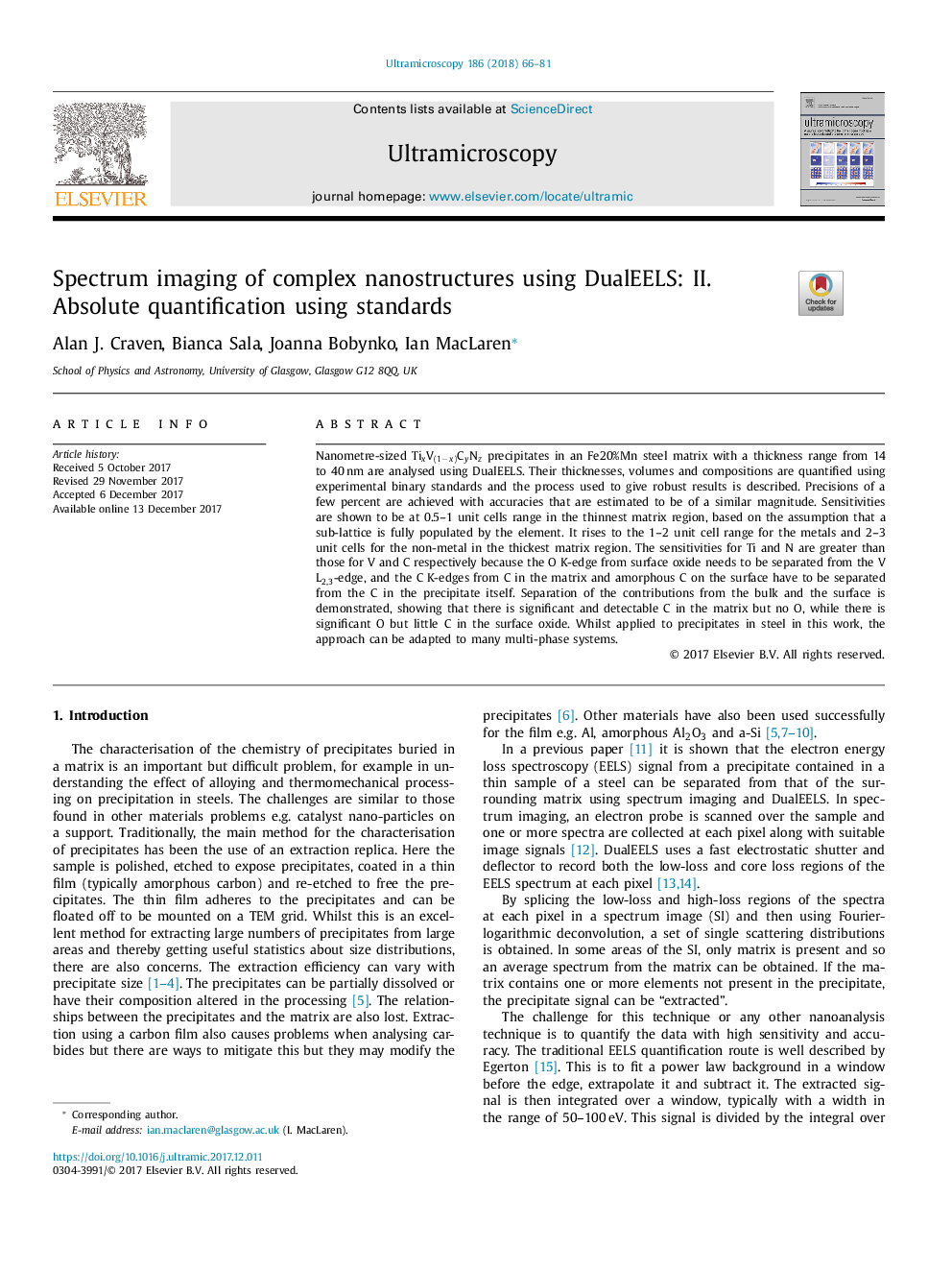| Article ID | Journal | Published Year | Pages | File Type |
|---|---|---|---|---|
| 8037740 | Ultramicroscopy | 2018 | 16 Pages |
Abstract
Nanometre-sized TixV(1âx)CyNz precipitates in an Fe20%Mn steel matrix with a thickness range from 14 to 40â¯nm are analysed using DualEELS. Their thicknesses, volumes and compositions are quantified using experimental binary standards and the process used to give robust results is described. Precisions of a few percent are achieved with accuracies that are estimated to be of a similar magnitude. Sensitivities are shown to be at 0.5-1 unit cells range in the thinnest matrix region, based on the assumption that a sub-lattice is fully populated by the element. It rises to the 1-2 unit cell range for the metals and 2-3 unit cells for the non-metal in the thickest matrix region. The sensitivities for Ti and N are greater than those for V and C respectively because the O K-edge from surface oxide needs to be separated from the V L2,3-edge, and the C K-edges from C in the matrix and amorphous C on the surface have to be separated from the C in the precipitate itself. Separation of the contributions from the bulk and the surface is demonstrated, showing that there is significant and detectable C in the matrix but no O, while there is significant O but little C in the surface oxide. Whilst applied to precipitates in steel in this work, the approach can be adapted to many multi-phase systems.
Related Topics
Physical Sciences and Engineering
Materials Science
Nanotechnology
Authors
Alan J. Craven, Bianca Sala, Joanna Bobynko, Ian MacLaren,
